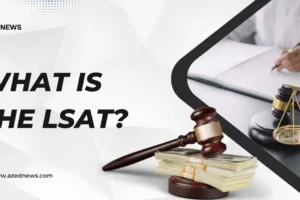Do you imagine studying on a lively US college campus, learning new topics and taking part in new experiences for Green Card for Higher Education? For international students, this dream can have limits. Student visas often restrict your work options and program choices if you are an international student. But a green card can solve this problem for you.
Table of Contents
A green card is a special document that gives you permanent US residency. It opens doors to a smoother and more fulfilling academic journey. A green card gives you the opportunity to be considered as a domestic student. You can compete for top programs as an equal. You can get financial aid to help with costs, or work part-time to gain valuable experience. A green card unlocks all this and more.
In this blog, we will discuss everything related to green card for higher education in the US. We will explore different green card options available for students, from family ties to exceptional ability. We will also look at how universities can sponsor faculty and staff for green cards.
If you are confused about life as a green card holder in college. Don’t worry, we have got your back. We will answer your questions about things like health insurance, financial aid, and work options. We will guide you step-by-step through the green card application process. This will make this exciting opportunity feel less overwhelming.
So, if studying in the US is your dream, a green card might be the key to unlocking it. Keep reading this blog to turn your academic dream into reality. Let’s get started.
Overview of Green Card for Higher Education
Obtaining a green card for college is a significant step that opens many opportunities and benefits. It grants permanent U.S. residency. This provides individuals with a sense of stability, security, and the ability to fully engage in studying and working within the country.
Green card holders pursuing higher education enjoy several advantages. You can have the freedom to study at any approved institution in the U.S., without the restrictions faced by international students on temporary visas. This expands your options to explore many top colleges and research centers.
Green card holders can get help from the government to pay for college. This will make going to college easier and cheaper for you. You can work part-time or do internships and train while studying. This gives you practical experience and exposure to the U.S. job market.
Also, having a green card let you set down stronger roots in the country. You can make connections that last a long time and help in their studies and careers.
The importance of obtaining a green card for higher education cannot be overstated. It gives you a strong base to reach your goals and work towards your dreams. This alone can make your future better in the USA.
Employment Visas for Faculty and Staff of Colleges and Universities
Faculty and staff in colleges have various green card choices for their employment. These options include H-1B visas, J-1 exchange visas, and treaty country visas. To get a green card, each type of visa has its own rules and steps you need to follow. Let’s have a look at them one by one.
1. H-1B Visas
The H-1B visa is a popular choice for faculty and staff in higher education. It allows employers to hire foreign workers in specialty occupations. To qualify for an H-1B visa, you need at least a bachelor’s degree and to work in a specialized field. The employer files a request for the employee, showing that the job meets H-1B rules.
Once approved, H-1B visa holders can work in the United States for up to six years. They can also apply for a green card during this period if they meet the eligibility criteria.
2. J-1 Exchange Visas
J-1 exchange visas are for people in US educational and cultural exchange programs. Faculty and staff in colleges can get J-1 visas if a school or research group sponsors them.
To get a J-1 visa, you need to be accepted into a program and show you can pay for yourself while you are here. J-1 visa holders may face a two-year residency requirement. This mandates a return to their home country before seeking other visas.
3. Treaty Country Visas
Faculty and staff from some countries can get special visas called E visas. These visas are part of agreements between the United States and certain countries. The E-1 visa is for trading and the E-2 visa is for investing.
To get an E visa, you must meet the following criteria:
- You must be a citizen of a treaty country
- Have extensive business dealings with the United States
- You must show that your presence in U.S. benefits the U.S. economy.
Your employer will need to request the visa on your behalf and provide evidence of your business connections. The employer must file a petition for you and show proof of the necessary trade or investment activities.
Each green card option for work has its own rules, steps, and things to think about. Faculty and staff in higher education must understand these available options. If needed, they should consult experts for permanent residency guidance.
How To Get a Green Card for Higher Education?
Higher education in the U.S. can lead to a stable life and better job chances. In college you can explore different types and rules to get a green card. Let’s see some of the common options available.
1. Extraordinary Ability (EB-1A)
The EB-1A visa allows very skilled people to work in their field. It’s for teachers, researchers, and other top workers in higher education. They need to show that they are well-known and respected in their field. To get an EB-1A visa, people must prove they have been praised for a long time. They need awards that people recognize. They also need proof that they made big contributions.
2. Outstanding Researchers (EB-1B)
The EB-1B visa helps great researchers in academic or science fields. A U.S. employer must sponsor the person. The employer has to show the person’s outstanding work in their field. To qualify, the person needs lots of proof of their research work and published papers. Letters from experts in the field are also required.
3. Advanced Degree Worker/Labor Certification
The labor certification process is called PERM. It is common for permanent residents. It is often used in higher education. A U.S. employer must prove there are no qualified U.S. workers for the job being offered. The employer has to carefully check the job market. This includes advertising the job and following strict hiring rules. After labor certification approval, the person can apply for a green card.
4. National Interest Waivers
The NIW category allows foreign nationals in higher education to skip labor certification. People in this category must show their work benefits the U.S. national interest. They must give proof of exceptional abilities. They must also show their work has a big impact.
These options allow students to continue their studies for a long time. Each choice has its own rules. Talk to an expert immigration lawyer. They can guide you on the best path.
Getting permanent residency is a big achievement. But, it needs careful planning, paperwork, and understanding of rules. You can get a green card with proper guidance and can then enjoy staying permanently in the United States.
How To Sponsor Faculty for Green Card in Higher Education?
1. Green Cards for Professors
A green card permits people to live and work forever in the U.S. Various green card options exist for college professors. Each has specific requirements and rules.
The Department of Labor (DOL) manages the Permanent Labor Certification (PERM) process. This process is key for sponsoring faculty for permanent residence. It ensures employers tried hiring U.S. workers before foreign nationals.
2. Special Handling
For teaching jobs in higher education, PERM offers a special handling option. This process caters to unique faculty roles in academia. It accelerates the green card process, letting universities skip some usual labor certification steps.
Schools have to show they tried hard to find the best teachers from other countries. This makes getting permanent residency faster for those teachers.
3. Standard PERM Process
Schools must use the standard PERM process for some faculty positions. They advertise for jobs, review candidates, and follow Department of Labor rules.
Schools post faculty job openings, look at applicants, and do required paperwork. They prove no qualified U.S. applicants wanted the role. If no suitable U.S. workers are found, the school can apply for a green card.
4. Steps for Green Card After PERM
After getting a certified work permit, the teacher and school can apply for a green card. Here are the usual steps:
- The school submits Form I-140 to USCIS. This form verifies the job qualifies for the green card category.
- The teacher can adjust status or do consular processing, based on the situation. Those in the U.S. can adjust their status, while those abroad do consular processing.
- The teacher may need an interview at the nearby USCIS office. The interview checks if they qualify and if the info is correct.
- Once approved, the teacher gets an immigrant visa stamp at the U.S. embassy or consulate in their country. After entering the U.S., they are processed as permanent residents and receive their green card.
The green card process can be different for each person. If you are serious about it, you can consider getting help from an immigration lawyer. Working with an experienced immigration lawyer is important to finish the process smoothly.
Sponsoring faculty members for permanent residence involves complex legal requirements and rules. Partnering with a lawyer who knows about education and immigration can help you a lot.
So far in this section, we covered green card basics. It includes employment-based green cards for faculty. Also, it explains the PERM process for sponsoring faculty members. Now, in the next parts of this article, we will focus on specific steps to become a permanent resident at a college. But before that let’s see what you should know as an international green card holder student.
What You Should Know as a Green Card Holder?
As a green card holder in college, you have both benefits and difficulties to deal with. Let’s learn the key factors for green card holders in higher education. We will discuss health insurance options, who can get federal student aid, and more.
1. Health Insurance Options
For green card holders in college, having health insurance is important. As a green card holder, you may have access to different health insurance plans. You should explore the options at your school to make sure you have adequate insurance coverage.
2. Eligibility for Federal Financial Aid
Green card holders in college may receive financial assistance from the government for school. This can include grants, scholarships, and loans. To check if you qualify, complete the FAFSA form and submit the required documents. Make sure to take advantage of these opportunities to help fund your education.
3. Permission to Work While Studying
As a green card holder, you can work in the United States. While studying, you may get a chance to work on campus or off campus. However, you need to learn the rules about working as an international student. You can consult your school official or student advisor to ensure you follow the rules.
4. In-State Tuition Eligibility
In-state tuition is cheaper than out-of-state tuition. It is good for students. Green card holders may get cheaper tuition in some states for college. You should research the residency requirements of your desired educational institution to determine if you are eligible.
5. Master’s Degree and US Citizenship
Green card holders can pursue master’s degrees without the limitations of student visas. Obtaining a master’s degree can create unique opportunities. It opens career options. Also, pursuing higher education as a green card holder can also put you on the path to U.S. citizenship. Green card holders can become U.S. citizens by meeting certain requirements, although it is not always guaranteed.
Your College Can Assist You In Getting A Green Card
Schools play a big part in helping people become permanent residents. In this part, let’s understand how colleges help students and staff get green cards. By learning about these things, you can better understand the complex immigration process.
1. Different Types Of Employees Get Sponsored
Colleges sponsor various staff members, such as professors, office workers, and academic advisors. Each group may have different rules and needs. It is important to know how sponsorship works for your specific role.
2. Steps To Obtain Permanent Residency
There are multiple steps to get permanent residency through a college sponsor. This involves filling out forms and getting labor certification if needed. The process includes applying and waiting for approval. Following each step carefully is important for a smooth process.
3. Costs And Legal Advice
Getting a green card through college support comes with costs. These may include application fees, legal fees, and other expenses. You should consult an immigration lawyer for guidance and legal compliance.
4. Additional Resources Available
Colleges often have links on their websites with more information about getting a green card. These resources provide details about the college’s sponsorship process.
You should understand your college’s process for permanent residency or green card sponsorship. Knowing about different employee sponsorships is the key. You should learn the steps, costs, and legal aid availability. To get a better picture, you can use the college’s resources for more information to successfully finish this process.
Getting a green card by having a university sponsor you is helpful. But, you must know the rules well. Following each rule exactly is important to get a good end result.
Frequently Asked Questions
1. Can having a green card make it easier to get into a US college?
Green cards do not guarantee college admission, but they can help. If you have a green card, schools consider you a domestic student. This means you have fewer limits than international students. You might have better chances, especially for competitive programs.
2. If I have a green card, do I need a student visa for college?
No, you don’t need a student visa if you have a green card. Green cards give you permanent residence. You can study without a separate student visa. You just need to meet the school’s regular admission requirements.
3. Can having a green card help me get financial aid for college?
Yes, green card holders can usually get federal financial aid like FAFSA. FAFSA provides grants, loans, and work-study opportunities. But you might need to meet other requirements too.
4. Wouldn’t it be better to just get a student visa instead of a green card?
Student visas are an option, but they have limits. There may be restrictions on working or changing schools. A green card gives you more freedom for your education.
5. How can I get a green card to study in the US?
There is no specific green card category for students. But you may qualify through family ties, job sponsorship after graduating, or even the EB-2 category for exceptional ability in certain areas. It is best to talk to an immigration lawyer about your options.
Conclusion
Having a green card is very useful for international students who want to study in America. With a green card, you are seen as a student from America. This gives you more chances to get into different programs. It may also help you get accepted more easily.
Green cards allow students to get money from federal programs like FAFSA. This helps pay for school more easily. Green cards also give more freedom than student visas. There are no limits on working or changing schools. This lets you change your plans as needed.
There is no such thing called a green card for students. But, you may get one because of family, a job after school, or special skills in some areas. If you are still confused, you can speak to an immigration lawyer. They can help find the best way for you to get a green card.
Getting a green card is a big step. So, planning carefully is the key here. If you plan the right way, a green card can help make studying in America go smoothly and successfully.












Add Comment